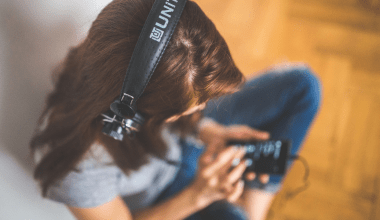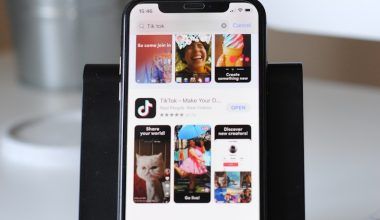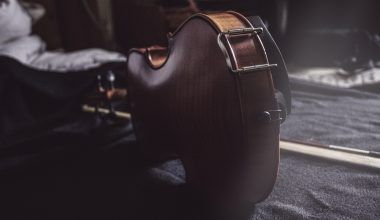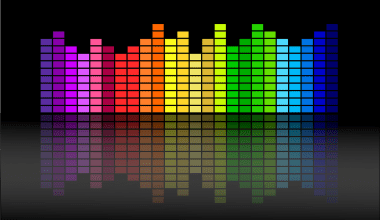Ever dreamed of recording your own song? What if I told you that you don’t need an expensive studio to make that dream come true? Yes, you can record a song at home! Thanks to today’s technology, recording music at home has become super simple and affordable.
This guide is for beginners like you who are just starting their music journey. We’ll break down the process into easy steps, so you feel confident and excited to create your music. By the end of this blog, you’ll know how to record a song at home and make it sound amazing. Let’s get started!
1. Why Record Music at Home?
Recording at home is not only cost-effective but also gives you the freedom to work at your own pace. Here’s why you should consider it:
Save Money
Recording in a professional studio can cost thousands of rupees. At home, you only invest in basic equipment, which you can use again and again.
Be Comfortable
Your home is your comfort zone. You don’t need to worry about time limits or being nervous in front of strangers.
Explore Your Creativity
Want to try singing your song differently or adding a fun beat? At home, you can experiment as much as you want.
2. What Do You Need to Start?
Don’t worry, you don’t need a lot of things to get started. Here’s a basic checklist:
- Computer: Any computer or laptop with decent speed will work.
- Microphone: A good microphone captures your voice clearly.
- Headphones: Studio headphones help you hear your song without distractions.
- Audio Interface: This connects your microphone to your computer.
- Recording Software: You’ll need software (like Audacity or GarageBand) to record and edit your music.
- Pop Filter: This stops your microphone from picking up harsh “P” or “S” sounds.
- Cables and Stands: These hold your microphone and connect all the gear.
3. Setting Up Your Home Studio
Find the Right Spot
Pick a quiet room where you won’t be disturbed. Avoid spaces with a lot of echoes or background noise, like the kitchen or living room.
Organize Your Gear
Keep your equipment neat and accessible. Use a small table or desk to set up your microphone, computer, and headphones.
Make It Cozy
Add a few soft items like rugs, pillows, or curtains to reduce sound reflections. This makes your recording sound clearer.
4. Choosing the Right Microphone
There are many types of microphones, but for home recording, two are most common:
- Condenser Microphone: Great for vocals. It captures every detail of your voice.
- Dynamic Microphone: Perfect for loud instruments like drums.
For beginners, a condenser microphone is usually the best choice. You can find good ones online for under ₹5,000.
5. What Is an Audio Interface?
An audio interface is like a bridge. It connects your microphone or instrument to your computer and improves sound quality. Without it, your recordings might sound dull or noisy. Popular options include the Focusrite Scarlett or Behringer UMC series.
6. Recording Software: Your New Best Friend
Recording software, also called a Digital Audio Workstation (DAW), is where the magic happens. You’ll use it to record, edit, and mix your music.
Here are some easy-to-use options:
- Audacity: Free and simple.
- GarageBand: Comes free with Macs.
- Reaper: Affordable and powerful.
- FL Studio: Great for electronic music.
Pick one that suits your budget and skill level.
7. Prepare Your Recording Space
Reduce Noise
Switch off fans, ACs, or any machines that create background noise. Even small sounds can ruin a recording.
DIY Soundproofing
Can’t afford professional soundproofing? No problem! Use blankets or cushions to cover hard surfaces. Even recording in a closet full of clothes can give surprisingly good results.
8. Step-by-Step Guide to Record Your Song
Step 1: Write Your Song
Write your lyrics and plan the melody. It’s helpful to have a clear idea before you start recording.
Step 2: Set Up Your Gear
Plug your microphone into the audio interface, and then connect the interface to your computer. Open your recording software and select the microphone as the input.
Step 3: Test the Sound
Do a quick soundcheck. Speak or sing into the microphone and adjust the recording levels to avoid distortion.
Step 4: Record in Layers
Start with one layer at a time. For example, first, record the background music or beat. Then, add vocals and other instruments.
9. Edit and Mix Your Song
Once you’ve recorded, it’s time to polish your work:
Editing
- Remove unwanted noise or mistakes.
- Use tools like Auto-Tune for pitch correction if needed.
Mixing
- Balance the volume of each layer so nothing overpowers the rest.
- Add effects like reverb or echo to enhance the sound.
10. Mastering: The Final Touch
Mastering makes your song ready for sharing. It ensures the volume is consistent and the sound is polished. If you’re not ready to master yourself, use online tools like LANDR or hire a professional. (how to record a song at home)
11. Avoid These Common Mistakes
- Skipping Warm-Ups: Always warm up your voice before singing.
- Ignoring Room Acoustics: Poor acoustics can ruin good recordings.
- Overloading Effects: Too many effects can make your song sound messy.
12. Tips for Professional-Sounding Songs
- Record in a quiet place to avoid background noise.
- Use a pop filter to avoid harsh sounds.
- Take multiple takes of your vocals and choose the best one.
13. FAQs About Recording at Home
Q1: How much does it cost to set up a home studio?
You can start with as little as ₹20,000 for basic equipment.
Q2: Do I need expensive gear to make good music?
Not at all! It’s more about your skills than the cost of your equipment.
Q3: Can I record music on my phone?
Yes, apps like BandLab and GarageBand allow you to record music on your phone.
Conclusion: You Can Do It!
Recording a song at home may feel overwhelming at first, but it’s a fun and rewarding experience. Start with what you have, keep learning, and don’t be afraid to make mistakes. Your home studio is a place for creativity, growth, and self-expression. So, pick up that microphone and let your voice be heard! (how to record a song at home)
Remember, practice makes perfect. The more you record, the better you’ll get. Happy recording!
Related Articles:
For further reading, explore these related articles:
- Local Singers: The Hidden Gems of Our Communities
- How to Add Your Own Music to Instagram Stories: A Simple Guide for Everyone
For additional resources on music marketing and distribution, visit Deliver My Tune.






